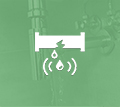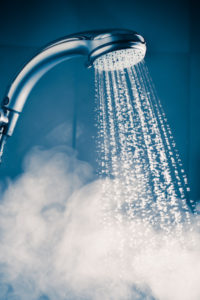Everything You Need to Know About Hot Water
We’ve all been there – you jump into the shower and get ready for that hot water to warm you up, except you’re waiting, and waiting, and nothing. It’s frustrating and time consuming when your hot water isn’t working as it should be. Also, the longer you have to wait for your water to heat up, the more water is wasted in the process. Since you pay for water, wasting water is the equivalent to throwing money away, which no one wants to do. The Department of Energy estimates that 800 to 1,600 kilowatt-hours per year are used to treat and pump the water that runs right down the drain waiting for it to reach a desired temperature.
It’s important to understand all the reasons why it might be taking your water a long time to heat up:
- Distance: The further away your hot water heater is from the shower, the longer it will take to get there. This distance varies for multi-level homes and apartment buildings.
- Low Volume Restrictor: A low volume restrictor on faucets can cause a delay on water delivery. Check to see if you have one installed.
- Failing Water Heater: A water heaters older than 10 years has the possibility of completely failing or being less efficient at heating water.
- Sediment Buildup: Sediment can build up in your water tank over time. Sediment is made up of dissolved minerals like calcium and magnesium. They end up settling at the bottom of the tank and causing a build-up that starts to displace the amount of hot water, making less available for your use and also creating a longer time between refills.
Fixing Your Hot Water Issue
Adding a hot water recirculation system should help reduce the amount of water that is wasted while waiting for it to heat up. A recirculating system works by moving water at a faster pace from the hot water heater to the faucet or tap. It recirculates used water back into the heater and keeps the hot water close to the faucets.
They can be powered on by a set timer or by a thermostat. If you allow the system to be in constant use, it could increase your energy consumption, so use it wisely. The recirculation system can be set-up near the faucet or directly attached to your hot water heater. If connected to the hot water heater, it will include a pump and a timer that is used to keep the hot water circulating.
Tankless Water Heater
A tankless water heater is an option that helps with a more direct source of hot water without having to wait for it to refill. Tankless water heaters provide ongoing hot water and reduced costs because the tank won’t spend time heating unused water. There are whole-house tankless water heaters as well as point-of-use tankless water heaters. These focus on hot water output per faucet and have the ability to be installed in a closet or cabinet. This is a great option if you have a water heater that power your entire house.
A water heater can account for up to 25% of your home’s energy use. Add that to the amount of water that’s wasted while you wait for it to heat up and you realize that your shower can be costing you money.
The experts at 1st Choice Plumbing Heating and Air can help you figure out the best method to get hot water to your faucets efficiently while also being mindful of your energy bill. Contact us to set-up an appointment!










